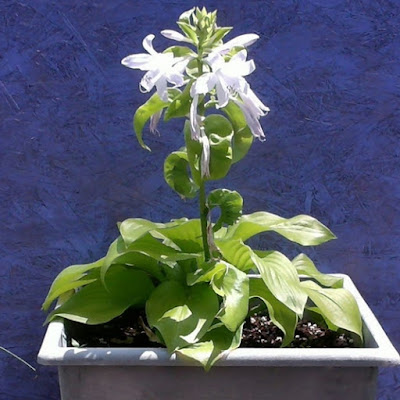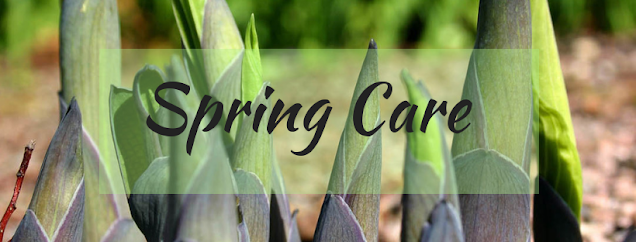Ultimate Guide to Growing Hostas
Hostas (plantain lilies) are hardy herbaceous perennials that grow well in Zones 3 through 8, with some that can tolerate the heat of Zone 9.
It's no surprise they continue to be one of the most popular perennials for shade gardens. Their beauty, toughness, and ease of care make them well suited for a shady or partly shady area and they will quickly become even a new gardener's favorite plant!
First, why is growing hostas so popular? Here are just a few reasons to start with.
Variety of Sizes
Mini Height -6"
Small Height 6-10"
Medium Height 10-18"
Large Height 18-28"
Very Large Height +28"
Variety of Colors
Their leaf colors range from green, blue, gold, yellow to white and countless variegated varieties.
Variety of Leaf Shapes
Hostas are known mostly for their durable, colorful foliage. There is no shortage of leaf shapes including heart-shaped, narrow, smooth, puckered, elongated, oval, rounded, and those adorable mouse ear shapes.
While hostas are basically known for their leaves, their lily-shaped blooms are nothing short of beautiful. Some hosta blooms are very fragrant, like in the above picture of H. The Shining, and they're a great choice for planting by a garden bench or on a deck or patio.
oz
Other reasons hostas are so popular
- They can be planted en masse for an attractive ground cover or hedge or to soften a fence line.
- They can thrive in shady conditions where most other perennials suffer.
- They're the perfect complement plant for other perennials. A hosta's earthy leaf color won't clash with a neighboring perennial's color or bloom which makes hostas the perfect foundation plant.
- Once established, they're a great weed barrier and are tolerant of occasional droughts.
Kindle Unlimited Membership Plans
How to Grow Hostas
Location, Location, Location – Sun or Shade?
Contrary to what many people think, hostas DO need some sun. Morning sun with afternoon shade is generally recommended to encourage lush growth and proper color development.
This kind of area will also give the hosta enough sun to thrive yet shield it from the afternoon sun, especially in the south where the summer sun can stress hosta plants and fade or burn their leaves.
- As a rule, light-leaved hostas will thrive in areas getting four to six hours of the morning sun, especially if adequately watered.
- Blue hostas will keep their color longer if grown in no direct sun and open, dappled sun/shade.
- Green hostas can take more light, morning or dappled sun, and even limited afternoon sun.
How to Plant Hostas?
- Plant the root ball at the same depth as it was before with the crown even with the surrounding soil and the growing tips visible at the soil surface.
- Plant with enough elbow room to allow for growth and air circulation.
- Apply a 2" layer of mulch after the soil warms in late spring to early summer. Shredded bark, shredded leaves or pine needles are some of the best mulches for hostas.
- Keep the mulch away from the center stem to prevent crown rot.
The Right Soil
Although hostas can grow well in nearly any soil, a soil with good drainage, a mix of organic material like peat moss, compost or coir will hold in the moisture that hostas thrive on. Hostas also prefer slightly acidic soil.
Here at Sunset Hosta Farm, we add leaf mold to our gardens and container hostas for just this reason.
One of the reasons that hostas continue to be so popular is the fact that they're a very low maintenance perennial.
That being said, if you follow a few basic steps to care for them, you can keep your hostas looking healthy and beautiful throughout the season, whether they're snug in the ground or in pots.
Hosta Seasonal Care
Water
On average, hostas require 1" of water per week, whether by rainfall or irrigation. However, do not water hostas in the Spring until the threat of frost has passed to prevent root rot. Drier is better since there are still some pretty cold days and nights ahead.
Soil
Hostas are known for their ability to grow in just about any soil. However, rich, slightly acidic, well-draining soil will keep your hostas looking their best. An addition of compost worked into the soil can do wonders for their early growth.
Further Reading: Best Soil for Hostas
Further Reading: Best Soil for Hostas
Fertilizer
As the hostas emerge in the Spring, apply a 10-10-10 balanced fertilizer (preferably granular slow-release) around the emerging clumps. Fertilize pot-grown hostas with a diluted fertilizer (at 25% strength) every few weeks.
Protection
Don't uncover your hostas too early!
Protect ones that have already emerged from any late Spring freezes by covering them with frost blankets, sheets, cardboard, etc. You will need to do this when the temperatures are expected to go down into the 20s.
Covering plants with plastic is not recommended as the plastic can freeze to the plant causing damage when removed.
Division
Hosta division is possible now if the ground is workable. However, this is not the best time since the roots will not grow until after the leaves form.
Further Reading: When to Divide Hostas
How to Transplant Hostas
Late Spring is a good time to transplant an entire hosta plant.
Other Spring Care Tips for Hostas
- When all danger of frost has passed, rake the mulch that you mounded up over the hosta as winter protection away from the developing eyes to prevent crown rot.
- Apply some fresh mulch away from the center crown.
- Disinfect all hardscapes with a solution of 10% ammonia to water to kill slug eggs.
- A sprinkling of clean crushed eggshells will help deter grubs and give the hosta some added calcium.
How to Care for Potted Hostas
If you've stored your potted hostas in an unheated garage or shed, slowly begin to acclimate the hostas to outside temperatures as it warms.
This may involve moving the potted hosta indoors and outdoors several times as the weather shifts. If the temperatures are expected to dip down in the 20s, you should cover the pot with a layer of cardboard, sheet or light blanket, etc, or better yet, bring them back inside.
Watering Hostas
Be careful not to water too much now. Drier is better since there are still some pretty cold days and nights ahead.
How to Fertilize Hostas
As hostas emerge in Spring, apply a slow-release balanced fertilizer. Other gardeners prefer to fertilize pot-grown perennials with a diluted fertilizer (25% strength) every few weeks instead.
Water
Lack of sufficient water during a dry summer can cause the hosta to go into mid season dormancy where the outer leaves will fade and wither and the hosta will stop growing.
By keeping the hostas well watered through the summer, especially during the hottest parts, you can help to avoid the hosta looking ragged, affectionately called "The Summer Uglies" by keeping the roots moist.
Increase watering so the plant receives at least 1 inch of water weekly, and cover the soil with a 2-inch mulch layer to help conserve moisture.
If you have a substantial hosta garden, it's a good idea to use a soaker hose for use on those dry summer days. The one below is the ones I use. I like the fact that you can just move them around since they're not staked to the ground.















Why do hosta stems fold in half instead of staying upright?
ReplyDeleteMy hostage grew in garage ..I forget it was in there from last year end of summer.The stems are now long and white and the flowers are yellow. The plant was dark green last year what should I do?
ReplyDeleteThis comment has been removed by a blog administrator.
ReplyDelete